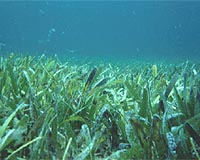| . |  |
. |
Paris (AFP) July 9, 2009 Remains of woolly mammoths have been found in southern Spain, proving that the chilly grip of the last Ice Age extended farther south than thought, palaeontologists said on Thursday. The fossilised remains of at least four mature male mammoths (Mammuthus primigenius) were found in a peat bog near the town of Padul in the Granada Basin, they said. Carbon-dating estimates the animals lived between 35,000 and 25,700 years ago. Until now, the southernmost mammoths in western Europe were found in Spain at around 40 degrees north, or roughly the same latitude as Spain. This new find, though, is more than 300 kilometres (185 miles) farther south, which shows that the grasslands that flourished in the dry, cold climate in the Eurasian ice ages extended much farther south than previously thought. "These woolly mammoths finds do not belong to stray animals who only chanced to head south, but belonged to Granada's permanent inhabitants at this time," said Diego Alvarez-Lao of the University of Oviedo, Spain. The finds are backed by evidence from drill cores, indicating that steppe plants once flourished in Spain. The team believe the woolly giants pushed south at the same time as similar advances into eastern China, northern Japan and Kamchatka, a migration associated with climate change in the northeast Atlantic and northwest Pacific. Mammoth remains have also been found in Georgia. "This is proof that global mechanisms which regulated climate already during the Ice Age also influenced vegetation and with it also animal migration," said Ralf-Dietrich Kahlke of Germany's Senckenberg Research Institutes. The team, which included scientists from the University of Madrid and the Natural History Museum in Rotterdam, publish their work in the journal Palaeogeography, Palaeoclimatology, Palaeoecology. Woolly mammoths eventually died out after the Ice Age, also called the Late Pleistocene, came to an end around 10,000 years ago. Some scenarios blame natural global warming that destroyed the animals' sources of food; others say the beasts were wiped out by humans who expanded rapidly after the big freeze. Share This Article With Planet Earth
Related Links Darwin Today At TerraDaily.com
 Loss Of Coastal Seagrass Habitat Accelerating Globally
Loss Of Coastal Seagrass Habitat Accelerating GloballyCambridge MD (SPX) Jul 07, 2009 An international team of scientists warns that accelerating losses of seagrasses across the globe threaten the immediate health and long-term sustainability of coastal ecosystems. The team has compiled and analyzed the first comprehensive global assessment of seagrass observations and found that 58 percent of world's seagrass meadows are currently declining. The assessment, published in ... read more |
|
| The content herein, unless otherwise known to be public domain, are Copyright 1995-2009 - SpaceDaily. AFP and UPI Wire Stories are copyright Agence France-Presse and United Press International. ESA Portal Reports are copyright European Space Agency. All NASA sourced material is public domain. Additional copyrights may apply in whole or part to other bona fide parties. Advertising does not imply endorsement,agreement or approval of any opinions, statements or information provided by SpaceDaily on any Web page published or hosted by SpaceDaily. Privacy Statement |